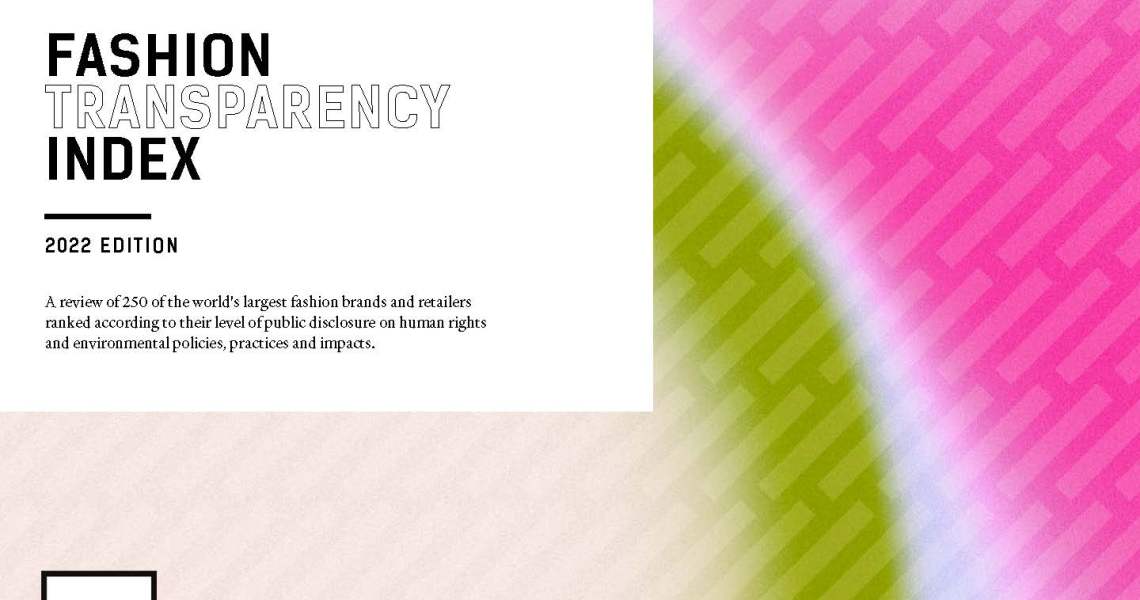On Thursday, the annual Fashion Transparency Index (FTI) report by non-profit organization Fashion Revolution revealed that improvements in fashion brand transparency have been meager, with only a 1% improvement, on average. The FTI analyzes 250 of the biggest fashion brands and retailers, based on their annual revenue, with a focus on their commitments to transparency across their supply chain. It then ranks them from 0-100% across a range of transparency disclosures, with a score of 100% being the most transparent.
The top-10 scorers this year include Italian company OVS, The North Face, Timberland and Gucci. The lowest scoring brands include Jil Sander, Tom Ford and Max Mara. Seventy-three out of the 250 brands scored in the 0-10% range.
Fashion Revolution co-founder and global operations director Carry Somers stressed the increasing importance of brands disclosing more about their processes and more data. “In 2016, only five out of 40 major brands, or 12.5% of brands, disclosed their suppliers. Seven years later, 121 out of 250 major brands, or 48%, disclose their suppliers,” she said. “This clearly demonstrates how the Index incentivizes transparency but it also shows that brands are listening. Our power is in our persistence.” Customers are also calling for brands to tell them where their clothes are coming from.
Among the starkest findings of the Index are that 28% of brands have disclosed information about their development of circular solutions, compared to only 8% on post-production waste. Brands are once again hiding out from putting forward data on overproduction and waste by focusing on innovation and circular solutions.
While ideas about degrowth circulated at recent sustainability conferences, where brands like Shein and Nike were present, the presentations reflected the report’s findings; focus was placed on innovation and circular technologies, rather than reducing production volumes. According to the FTI report, only 15% of brands and retailers disclose how many products they produce annually.
The issue of overproduction and greenwashing has been accentuated in recent weeks, thanks to companies like H&M and Norwegian label Norrøna relying on the flawed Higg Materials Sustainability Index. Their reliance on the Higg Index led to Norrøna being investigated, with the Norwegian consumer watchdog NCA concluding that the data from the index is misleading. As a result, the Sustainable Apparel Coalition announced it was pausing its Higg Index tools. It is unclear yet whether they will be returning.
Brands are most proactive about disclosing their first-tier manufacturers, materials strategies and carbon footprints in offices and stores. The lowest numbers come from ring-fenced labor costs, ethnicity pay gaps and amount of water usage when creating raw materials.
Ad position: web_incontent_pos1
The report also focused on the issue of wage disclosure, stating that brands need to be doing more to understand their workers’ situations. Ninety-four percent of the featured brands do not disclose the number of workers in their supply chain that are impacted by recruitment fees, which can have modern slavery links that brands could be unaware of.
“Even when workers are laid off or dismissed from work, they’re still expected to pay back recruitment fees,” said Liv Simpliciano, policy and research manager at Fashion Revolution. “It’s absolutely critical that brands understand the circumstances under which the garment workers in the supply chain gain employment, because these recruitment fees should ultimately be paid by the brands themselves.” In places like Malaysia, migrant workers have been known to pay around $5,000 to get jobs that ultimately pay poverty wages, leading to debt bondage where a worker has to work to pay off a debt.
The majority of sustainability initiatives in the last six months by leading brands have focused on innovation and material technology, as with Nike and its ISPA Link circular trainers, or on investments in alternative materials, like Hermès and its use of mycelium in bags. While important, the focus should be on the operations side, including brands’ treatment of and engagement with workers, and material production’s ecological impact. “The lack of transparency in areas like responsible purchasing means brands are still lacking accountability for the fact that their purchasing practices are a key driver for suppliers to be able to ensure good working conditions in their facilities,” said Simpliciano.




